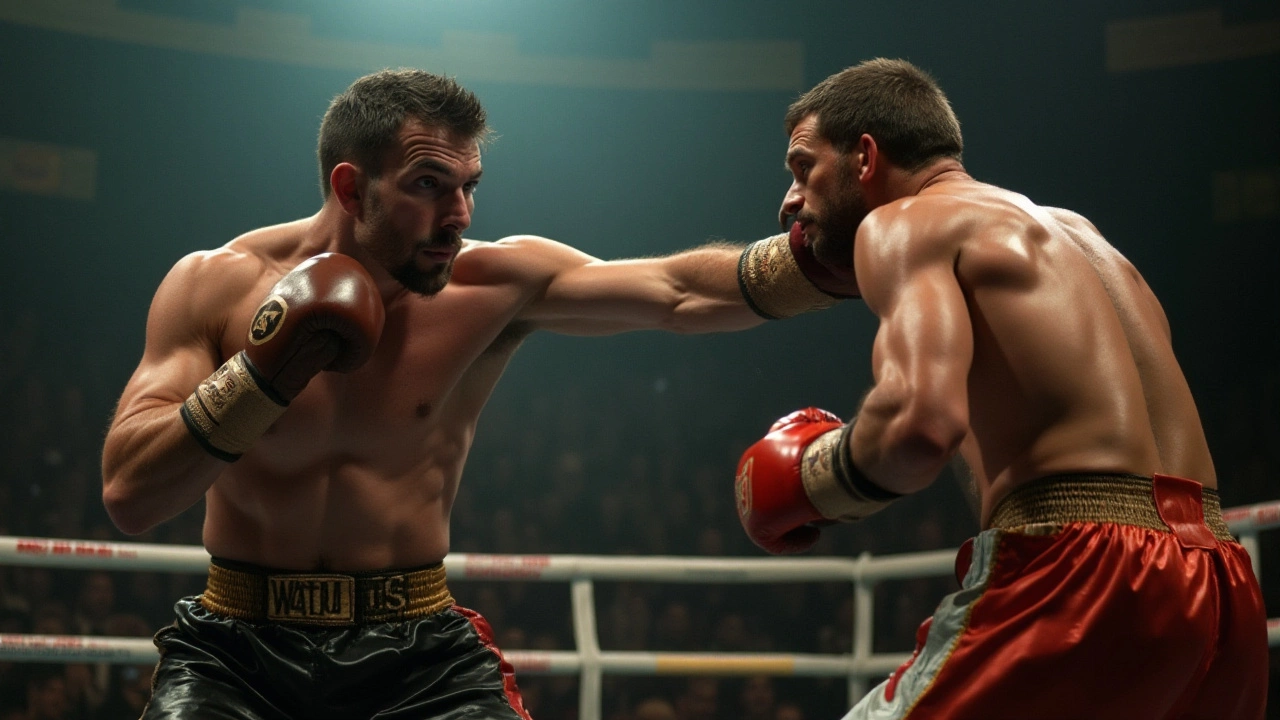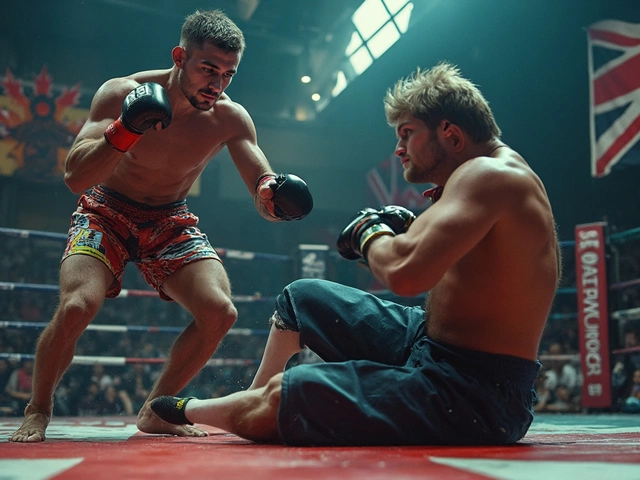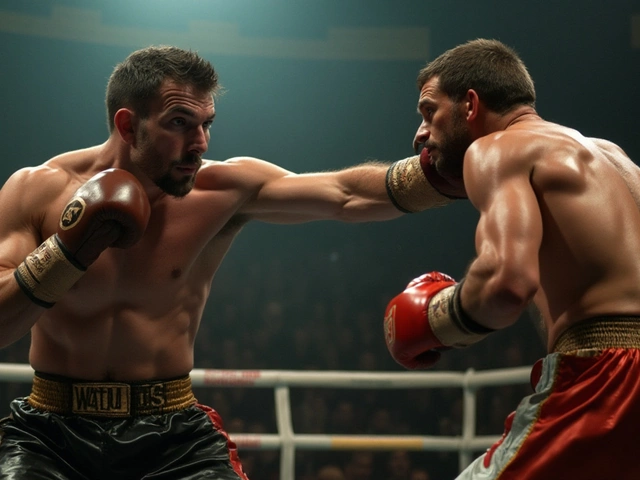When it comes to the exhilarating world of boxing, victory is never just a simple win. Each triumph carries its own story, reflecting the skill, strategy, and sheer will of the athletes. In the squared circle, defining a victory isn't always straightforward. There are several ways a boxer can come out on top, each with its unique features and implications.
Victories can range from the dramatic knockout, where a single punch can finish the fight, to the tension-filled decision wins that keep fans on edge till the last scorecard is read. Understanding these outcomes requires delving into boxing's deep-rooted traditions and rules. But one thing is clear: each victory is a testament to the fighter's determination and the sweet science of boxing itself.
As we navigate through the different facets of boxing wins, you’ll uncover how each type of victory affects not only the records but sometimes the destiny of the fighters themselves. Let’s dive into the heart-pounding excitement of what it means to win in boxing.
- Understanding Boxing Wins
- The Art of Knockouts
- Decision Wins Explained
- Technical Knockouts and Their Impact
- Historical Significance of Boxing Victories
Understanding Boxing Wins
In the realm of boxing, victories come in various forms, each celebrated differently by fans, analysts, and the fighters themselves. At the core of any boxing match lies the ultimate goal – to secure a boxing victory. The methods to achieve this victory are as diverse as the boxers that step into the ring. From the electrifying knockouts to the more calculated decision wins, each type adds a unique flavor to the sport.
The most dramatic and perhaps the most recognized form of winning a boxing match is through a knockout, where one boxer renders the other incapable of continuing the fight. This could happen with a single, decisive punch, or after a series of well-calculated blows that leave no room for recovery. The impact of a knockout is immediate and unambiguous – it declares a winner without the need for judges or further deliberation. A classic example would be Muhammad Ali's triumph over Sonny Liston, a historical fight that still echoes in boxing conversations today.
On the other side of the spectrum, we have the decision wins, which unfold in a more measured manner. These are determined by the judges’ scorecards if a fight lasts the scheduled rounds. Judges base their decisions on several factors, including the number of punches landed, defense strategies, and the overall control of the match. Decision wins are significant because they often determine a winner when neither fighter has managed to overpower the other entirely. These outcomes are sometimes controversial, leaving room for debates about fairness and bias in scoring, as seen in many well-publicized matches.
Sometimes, a bout ends with what's known as a technical knockout. This occurs when a referee steps in to stop the fight, usually for the safety of a boxer who, though still standing, is no longer able to defend themselves effectively. Understanding these distinctions is crucial for appreciating the layers that make up this incredible sport. Each method embodies a different skill set, be it the power of a knockout punch or the strategy involved in securing a decision win.
The evolution of these victory types has made boxing not only a test of physical prowess but also a strategic contest of minds. By recognizing the various ways a match can end, fans gain a deeper insight into the sport’s nuances, seeing beyond the blood and sweat to appreciate the sheer dedication involved. Boxing is as much about mental toughness as it is about physical strength, and this combination is what makes it such an intensely captivating sport.
The Art of Knockouts
In the realm of boxing, a boxing victory is celebrated like no other when it comes in the form of a knockout. The knockout, often abbreviated as KO, is a decisive win where one fighter has rendered the opponent unable to continue the bout, usually due to a powerful punch that forces them to the canvas. This dramatic conclusion not only showcases the physical strength and precision of the boxer but also his strategic prowess inside the ring. Knockouts hold a unique place in the hearts of both fighters and fans, delivering a climax that leaves an indelible mark in boxing history.
Often considered the pinnacle of excitement, the knockout combines elements of surprise, agility, and timing. A fighter plans meticulously for a knockout, exploiting the opponent’s weaknesses and analyzing their movements diligently over rounds. The electrifying moment when a punch lands just right, sending shockwaves through the crowd, is the result of calculated risk and relentless training. Boxers hone their technique over the years, perfecting the art to ensure that when the time comes, they can seize the opportunity with a single, defining blow.
Statistically speaking, knockouts are not the most common outcome in every boxing match, yet they account for some of the most memorable moments in the sport's history. According to CompuBox, a boxing statistics service, approximately 40% of professional boxing matches end in a knockout. While not every fighter is known for knockout power, those who master the technique often dominate with an aura of invincibility, much like legends Mike Tyson or George Foreman in their prime.
"The bigger they are, the harder they fall," rings true in the sport, illustrating how a seemingly inevitable defeat can quickly turn into a stunning victory with a masterfully executed punch.The daunting aspect of knockouts is their unpredictability, which keeps both competitors and spectators on the edge. A single moment can pivot the outcome of the match, defying expectations and rewriting narratives. This element of uncertainty fuels the adrenaline and makes each fight uniquely captivating.
While the glory of delivering a knockout rings throughout the arena, it's vital for fighters to prioritize safety. The force that creates these spectacular victories can also pose considerable risks. As awareness around head injuries and long-term effects of concussions grows, boxing federations emphasize stringent medical guidelines to protect fighters. Such measures underline the delicate balance between the thrill of a knockout and preserving the health of those who step into the ring. By recognizing and adhering to these guidelines, the sport continues to evolve, ensuring that every victory, including a knockout, can be celebrated responsibly.
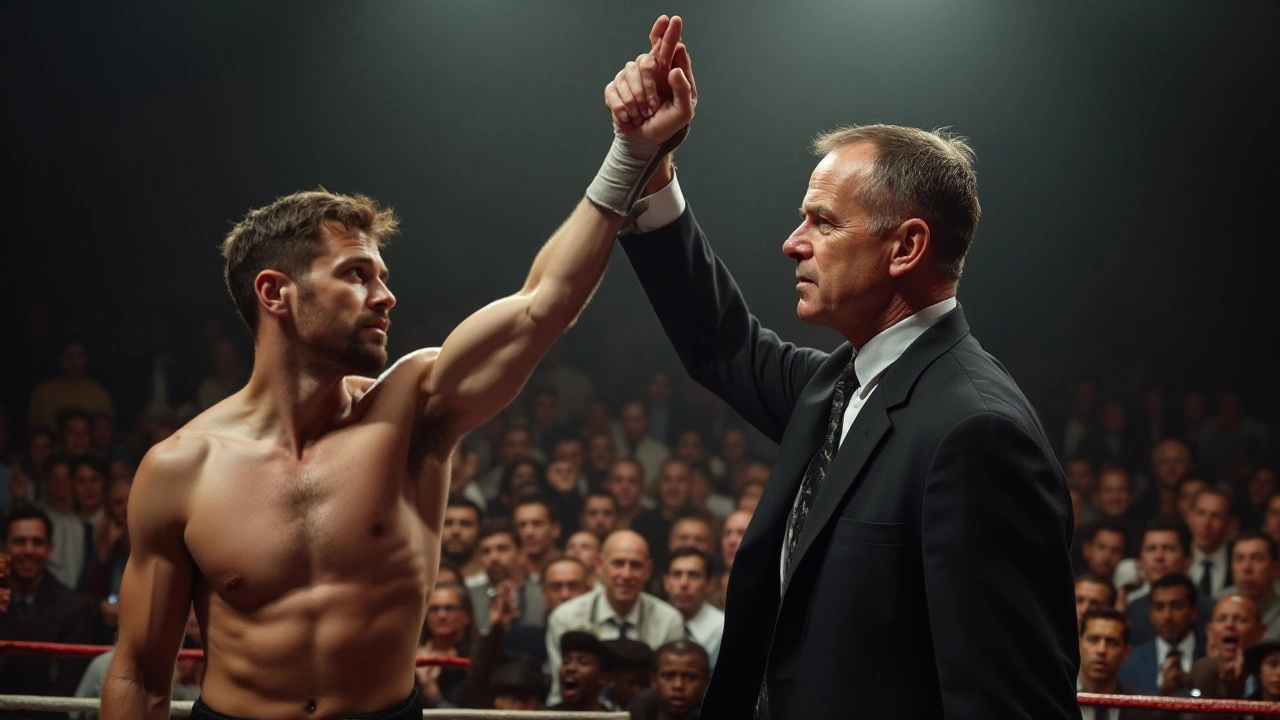
Decision Wins Explained
In boxing, not every match ends with one fighter flat on the canvas. Often, the outcome comes down to decision wins, where judges are tasked with determining the victor. This form of victory is both an art and a science, as it involves a deep understanding of the sport and its nuances. Decisions are reached after the scheduled rounds have been completed without a knockout. Judges evaluate each round, attributing points based on a system that considers effective aggression, ring generalship, defense, and clean punching. Known as the ten-point must system, this framework dictates that the winner of a round typically receives ten points, while the loser receives nine or fewer, depending on how lopsided the round was.
The way points are distributed is critically important as it reflects the intricate dynamics between the opponents. The scoring system isn't just about brute strength; it lends consideration to technique and tactical execution. The distinction lies in how a fighter can control the ring, dictating the pace and engaging in exchange when beneficial, or slipping away when necessary. It’s an aspect that enriches the sport, opening a layer of conversation and analysis beyond just observing who lands the most punches. Boxing fans and analysts often engage in spirited discussions about whether judges made the right call, a debate fueled by the somewhat subjective nature of the scoring criteria.
A decision win is classified as a unanimous decision if all three judges agree on the winner. It becomes a split decision when two judges see the fight in favor of one fighter, while the other judge sees the opponent as the winner. There's also the potential for a majority decision, where two judges choose one fighter, and the third scores it as a draw. Each of these outcomes can significantly influence a boxer's career, often affecting future matchups and title opportunities. A critical part of the strategy in the ring for fighters who aim for a decision victory is ensuring consistency and composure across all rounds, as often the fight is so close that a single round can sway the ultimate outcome.
Historical Perspectives on Decision Wins
Boxing history is replete with iconic decision wins. One notable example is the epic encounter between Sugar Ray Leonard and Marvin Hagler in 1987. This match ended in a split decision, a result that sparked controversy and discussion for years. Leonard’s ability to score a victory was attributed to his tactical brilliance and use of sporadic flurries to sway judges, even as Hagler's relentless approach posed a constant threat. Such matches underline the importance of understanding not only how judges interpret actions within the ring but also how fighters adapt their styles to maximize their opportunities for a decision win.
Highlighting some statistics, a comprehensive analysis spanning several decades reveals that around 30% of professional boxing matches end in decision wins rather than through knockouts. This showcases the vital role judges' decisions play in the sport, affirming the need for transparency and fairness in the scoring process. As the landscape of boxing continues to evolve, fighters and promoters alike seek to maintain the credibility of this traditional judging method while embracing innovative approaches to enhance accuracy and objectivity.
"Boxing is the ultimate challenge. There's nothing that can compare to testing yourself the way you do every time you step in the ring," Muhammad Ali once said, encapsulating the essence of what drives fighters towards a decision win.
Technical Knockouts and Their Impact
In the fast-paced world of boxing, a technical knockout (commonly known as TKO) can shift the dynamics of a fight in an instant. A TKO occurs when the referee, ringside physician, or the fighter's corner decides that the competitor can no longer safely continue. Unlike a traditional knockout, where a boxer is completely incapacitated, a TKO is about protecting the boxer's future well-being. Revered as a tool to safeguard athletes, the TKO is often viewed with mixed emotions—meshed with the relief of safety yet shadowed by the abruptness of the fight's end. Drawing from iconic moments in boxing, it can be a pivotal deciding factor in a match, such as when Lennox Lewis defended his WBC title by TKO against Vitali Klitschko in 2003, a bout that still sparks debate over its officiating.
The decision to halt a fight on a TKO rests on more than just a glance or a single blow. Hawk-eyed referees are trained to spot indicators of a fighter's failing defense and physical decline, making snap judgments in a matter of seconds. It's not just about one punch too many or a bleeding cut; sometimes, it's the glazed look in an athlete's eyes or an inability to coherently respond that tips the scale. For those who doubt the wisdom of a TKO, it's crucial to remember the words of legendary trainer Cus D'Amato:
"The hero and the coward both feel the same thing, but the hero uses his fear and projects it onto his opponent, while the coward runs."Such decisions are made to ensure the fighter's ability to be a hero another day.
The impact of a technical knockout resonates far beyond the match itself. It influences rankings, career trajectories, and sometimes, a fighter's entire future. While a TKO prominently displays the winner’s strength and strategy, it also opens discourse on a boxer's preparedness and physical endurance. For instance, statistics indicate that approximately 30% of professional boxing matches are concluded by TKO, revealing its significant role in the sport's narrative. In a hypothetical season where a boxer claims multiple TKO victories, it not only embellishes their record but showcases their dominance and strategic prowess in the boxing matches circuit.
Additionally, the psychological ramifications of a TKO can't be understated. For a boxer, facing a matchup that ended in a technical knockout is akin to a test of resilience and mental fortitude. Such an ending often spurs the athlete to return stronger, motivated by the lost opportunity to showcase their prowess. For fight fans, on the other hand, a TKO invites them to debate fighter readiness and the unpredictability of the sport. Discussion often swirls around ringside, as enthusiasts analyze whether interventions were preemptive or necessary, casting a light on the delicate balance between entertainment and safety in boxing.
In covering the track between bravery and defeat, a technical knockout serves as a poignant reminder of boxing's harsh yet enthralling nature. It emphasizes that, at its heart, boxing is not only about victory but about respecting each athlete’s journey. Whether mourned or celebrated, every TKO underlines the essence of the sport, where triumph and the fleeting cessation of combat mingles seamlessly.
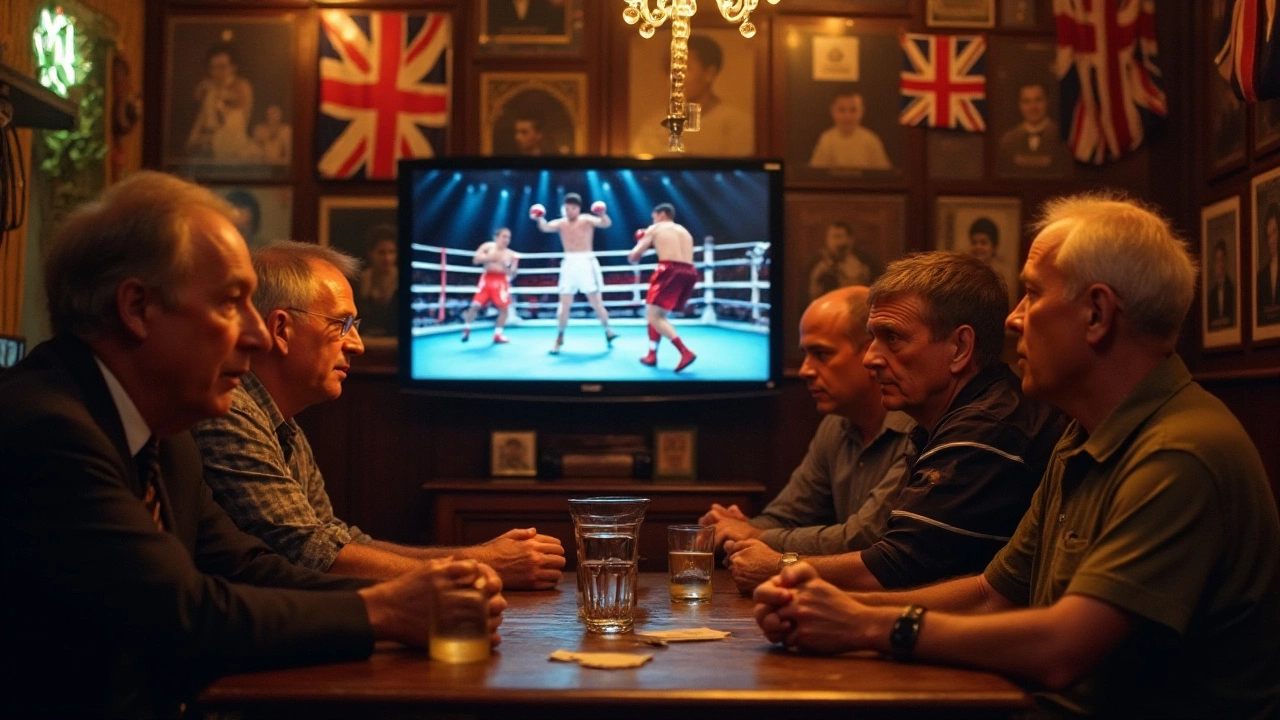
Historical Significance of Boxing Victories
In the realm of sports, few achievements resonate as profoundly as a boxing victory. These wins have shaped not only the trajectories of individual boxers but have also left indelible marks on culture and society throughout history. From the ancient pugilists of Greece to the showstoppers like Muhammad Ali, each victory carries narratives deeper than fists and sweat. Understanding these victories offers a window into the cultural dynamics and societal changes the sport has influenced.
Boxing as a competitive sport dates back to at least 688 BC when it was first included in the Olympics, but the modern history of boxing truly took shape in the late 19th century. It was during this period that John L. Sullivan, the last bare-knuckle champ and first gloved boxing champion, rose to prominence. Sullivan's victories symbolized a shift towards respectability and regulation in the sport. Over the years, each championship fight has been influenced by the socio-political climate of its era. During the 1930s, Joe Louis's triumphs became emblematic for African Americans, signifying hope and racial pride at a time when such moments were rare.
The 1960s and 70s saw Muhammad Ali, with his combination of skill, charisma, and controversy, transform boxing victories into global headline events. He used his wins to make bold political statements, famously stating, "I am the greatest, I said that even before I knew I was." His bouts with Joe Frazier and George Foreman were not merely fights but events transcending sports, reflecting the era's struggles, changes, and spirits. Boxing victories often coincided with societal shifts, with bouts sometimes perfectly mirroring contemporary issues. For instance, the rivalry between Jack Johnson and Jim Jeffries in the early 1900s was laden with racial tension, as Johnson's victories challenged the then-prevailing racial norms.
In more recent history, the victory of Larry Holmes over Muhammad Ali in 1980 was another pivotal moment. It represented not just a change of guard from one boxing era to another, but it also marked a moment when the public came to grips with the reality of aging champions. There is also the remarkable tale of Manny Pacquiao, who achieved victories that were not only about personal success, but national pride for the Philippines, showing us how these triumphs can bring nations together. Pacquiao's dual career as a boxer and politician adds yet another layer to the historical significance of his victories.
As boxing evolves, each new victory continues to echo its rich past while influencing the future. Whether it be through symbolic victories during historical upheavals or individual stories of personal ascendancy, these wins are woven into a fabric of culture and triumph, reflecting the world's rhythm. By tracing the boxing matches and victories over time, one can appreciate not just the evolution of a sport but the profound narratives of human tenacity, societal growth, and cultural storytelling.
